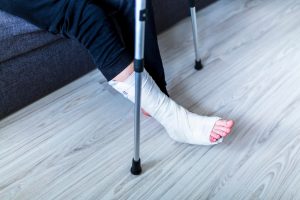In light of the Covid pandemic, many people may be alarmed to know that not all workers are covered by the Personal Protective Equipment (PPE) At Work Regulations. However, new regulations coming in on 6 April 2022 will extend the current framework. This is an important change because not only does it protect previously unprotected employees at work but it also makes employers potentially liable for injuries.
Who is currently covered by Personal Protective Equipment regulations?
At this moment in time, it is only workers who are defined as employees under the Health and Safety at Work etc Act 1974 that are covered by PPE regulations. In essence, these are workers that have a defined contract of employment with their employer.
What are the oncoming changes?
From 6 April 2022, those employees with a more casual relationship with a third party will be covered by the PPE regulations. This takes in individuals that:-
- Carry out work on behalf of one or more organisations on a casual/irregular basis.
- Even after one month of continuous service, they do not receive full employment rights.
- Only work as and when they want to, there is no obligation.
- Are contracted to carry out work for reward with limited opportunities to swap shifts, etc.
- Are not in business for themselves.
While many of us assume that those working for companies/organisations are covered by the current health and safety regulations, this is not always the case. Thankfully, changes are happening and everyone will be on the same footing come April 2022.
Providing PPE
In the midst of the Covid pandemic many people “chose” to purchase their own PPE as an added means of protection in the workplace. Those currently covered by the regulations should not have had to have done this. Your employer is legally obliged to provide you with PPE to protect you in the workplace. It is illegal for your employer to force (or encourage) you to buy your own PPE, if the equipment in question is required to carry out your normal working activities.
It is also important to note that the Personal Protective Equipment made available to employees should be of a high enough quality to provide the protection required. Providing substandard PPE could lead to medical issues/injuries and claims for personal injury compensation.
If you believe that your employer is not providing the correct PPE or the equipment is substandard, you should report them to the Health and Safety Executive. While many people are reluctant to take this course of action, you could literally be saving lives in the future.
Training for employees
Training is central to the legal obligations that employers have towards their employees. While we tend to focus on health and safety issues, all employees must be given training on how to correctly use PPE. This not only ensures that they are fully protected in the workplace but may also be a defence if an employer is pursued by an employee for inadequate training and PPE related injuries.
Remember, training is not just a one-off action, it should begin on the day you start your employment and be continuous throughout your time with the employer. Again, failure to provide initial training and update sessions going forward is a legal failure on behalf of employers and could result in action by the authorities.
Pursuing a PPE related claim against your employer
If you have suffered an injury as a consequence of substandard PPE or the non-provision of such equipment, you may have a claim against your employer. In this scenario, it is important that you speak to a claims advisor initially to see whether you have a case. The likelihood is that if one employee is receiving substandard PPE from their employer, then others will likely be in the same situation.
When putting together a case you should gather as much information as possible, including:-
- Details of injuries received.
- Details of the accident.
- Witness statements.
- Copies of communications with your employer regarding Personal Protective Equipment.
It is also useful to provide additional supporting information which would give the personal injury claims advisor a broader picture of the situation. This can take numerous forms such as details of:-
- Any PPE supplied.
- The standard of the safety equipment.
- Issues with the PPE.
- Training offered and received.
- Potential dangers in the workplace.
- Similar historic claims against the employer.
- Evidence of employer risk assessments.
If you’re advised to take legal action against your employer, your solicitor will walk you through the process; explain the procedure and what is required to pursue a claim.
Saving lives in the future
Whether we like it are not, taking legal action against your employer goes against the grain for many people. However, if your employer has put you in danger and you have been injured then surely at worst they have questions to answer?
History shows that employers will only change procedures and invest additional funds when their “feet are held over the fire”, meaning there are potential financial consequences. So, as a result of your actions, your employer may decide to invest more money into Personal Protective Equipment which could potentially save the lives of colleagues going forward. It is only natural to have concerns about taking legal action against your employer but it is important to look at the bigger picture.



